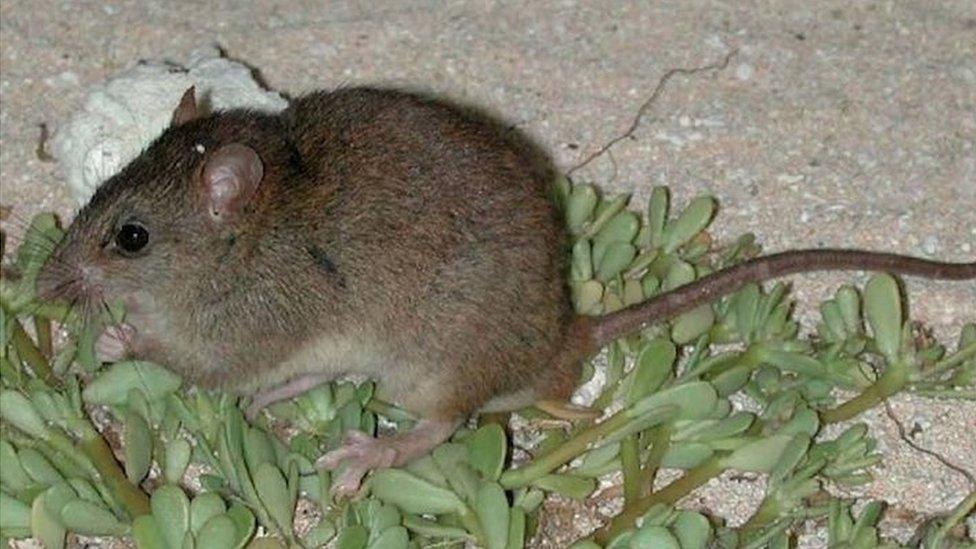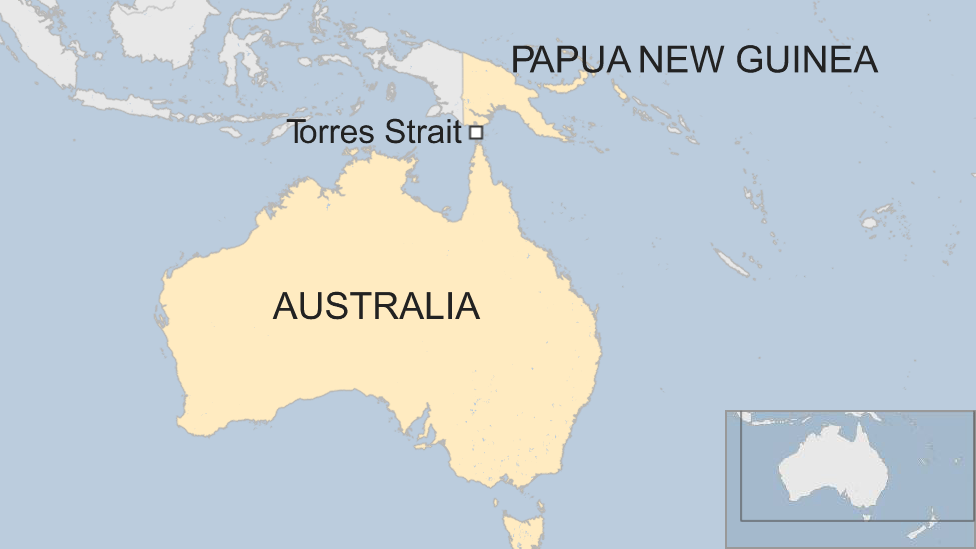Bramble Cay melomys: Climate change-ravaged rodent listed as extinct
- Published

The Bramble Cay melomys lived on a tiny island in Australia's far north
It was described in 2016 as the first mammalian extinction caused by human-induced climate change.
Now the eradication of the Bramble Cay melomys has been officially recognised by Australia, its only known home.
The rodent lived solely on a tiny sand island in the Torres Strait, near the coast of Papua New Guinea (PNG). The species has not been seen since 2009.
Scientists say there is a chance that an identical or similar species could yet be discovered in PNG.
But they're uncertain because PNG's nearby Key River region has been little documented by research.
Australia has one of the world's highest rates of animal extinction, external, says the International Union for Conservation of Nature.
'Our little brown rat'
The Australian government's decision to list the species as extinct comes after the Queensland state government made an identical determination in 2016, external.
A state government report said it was almost certainly caused by "ocean inundation of the low-lying cay, very likely on multiple occasions, during the last decade, causing dramatic habitat loss and perhaps also direct mortality of individuals".
It added: "Significantly, this probably represents the first recorded mammalian extinction due to anthropogenic climate change."

The loss of an animal that was hardly known in the public mind has generated sadness in Australia and abroad.
"The Bramble Cay melomys was a little brown rat," said Tim Beshara, a spokesman for advocacy group The Wilderness Society.
"But it was our little brown rat and it was our responsibility to make sure it persisted. And we failed."
Conservation efforts
The Sydney Morning Herald reported that Australian scientists had found no trace of the animal, external in recent surveys of Bramble Cay, an island of just five hectares.
A 2008 "recovery plan" had downplayed the risks to its survival, the newspaper reported.
The current government, in office since 2013, has frequently defended its environmental efforts - citing a A$425m (£233m; $300m) investment in threatened species programmes, among other efforts.
But it has also been heavily criticised by conservation groups, external for not providing greater funding, or additional policies.
Australia is rare among developed countries because it is described as mega-diverse, but experts warn that biodiversity is under threat from environmental upheaval.
The nation is not on track to meet its commitment of reducing emissions by 26-28% on 2005 levels by 2030, according to the most recent government data.

How do we decide how endangered a species is?
Are they all living in one area - and therefore more likely to be wiped out by a single cause - or are they geographically spread out?
How long is their reproductive cycle and so how quickly could their population recover if there were enough breeding pairs?
What are the range of threats they face?
How genetically diverse is the population?
How threatened is their habitat?